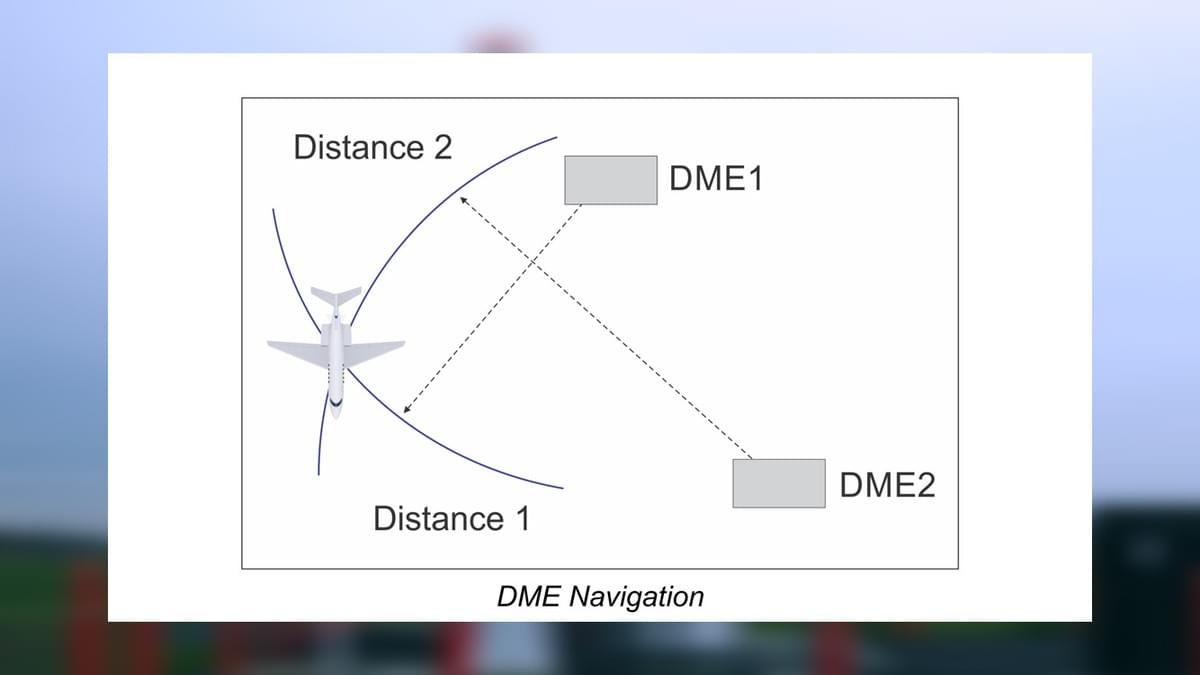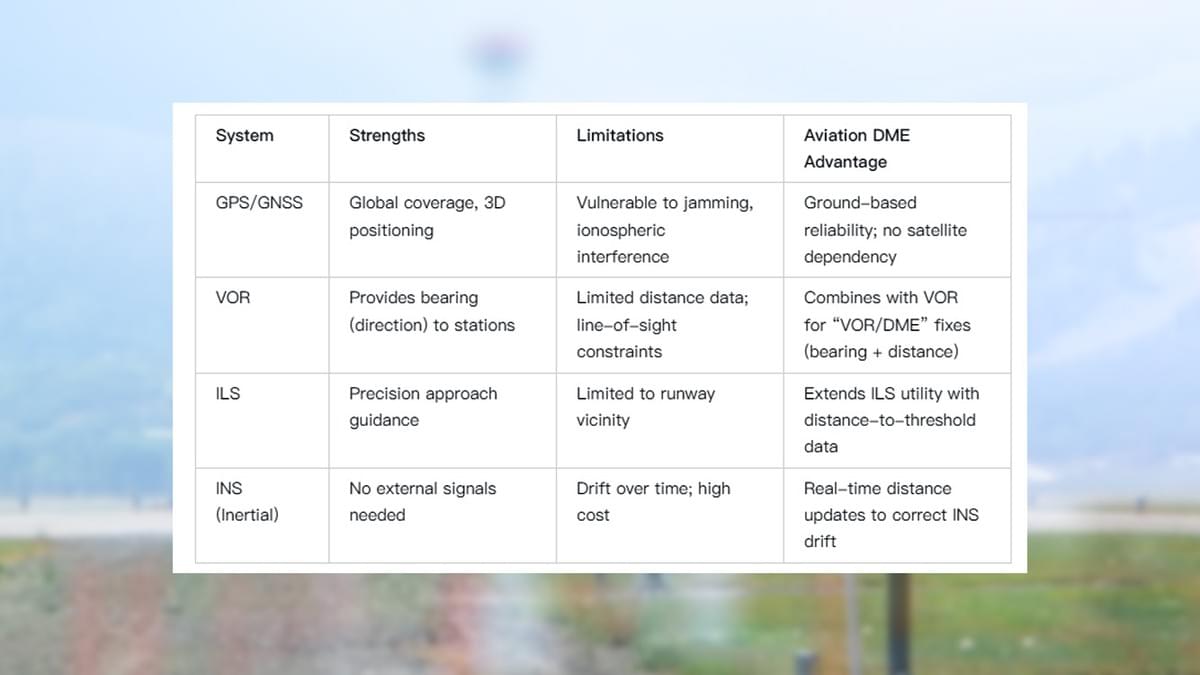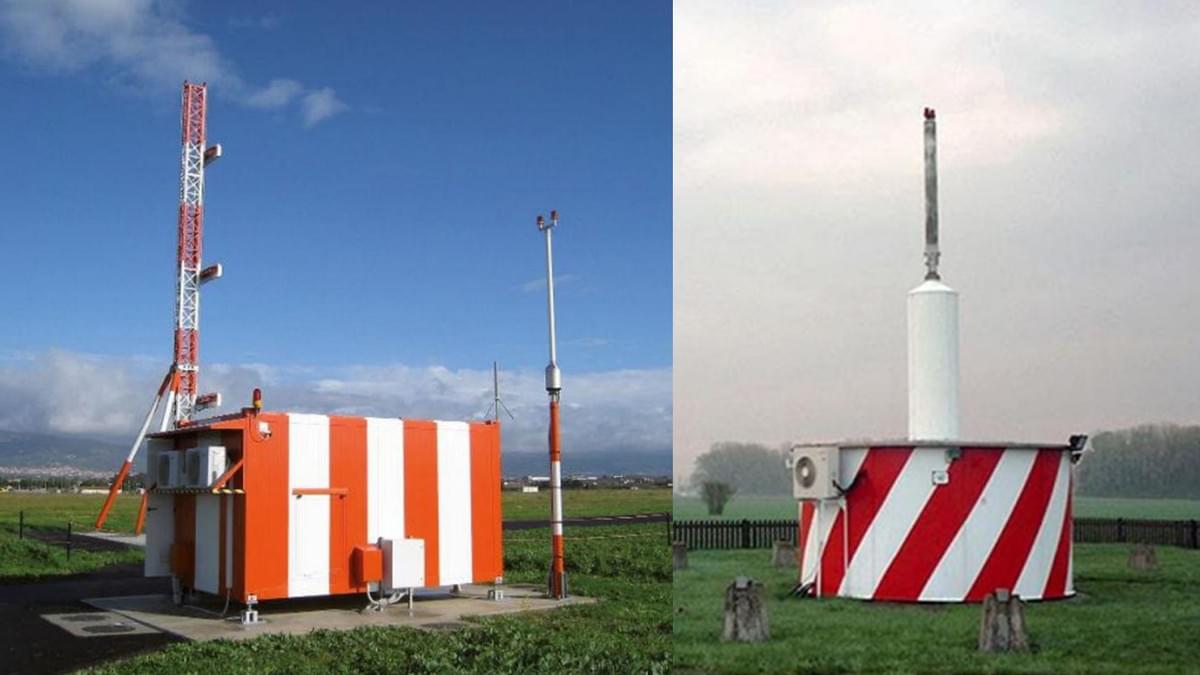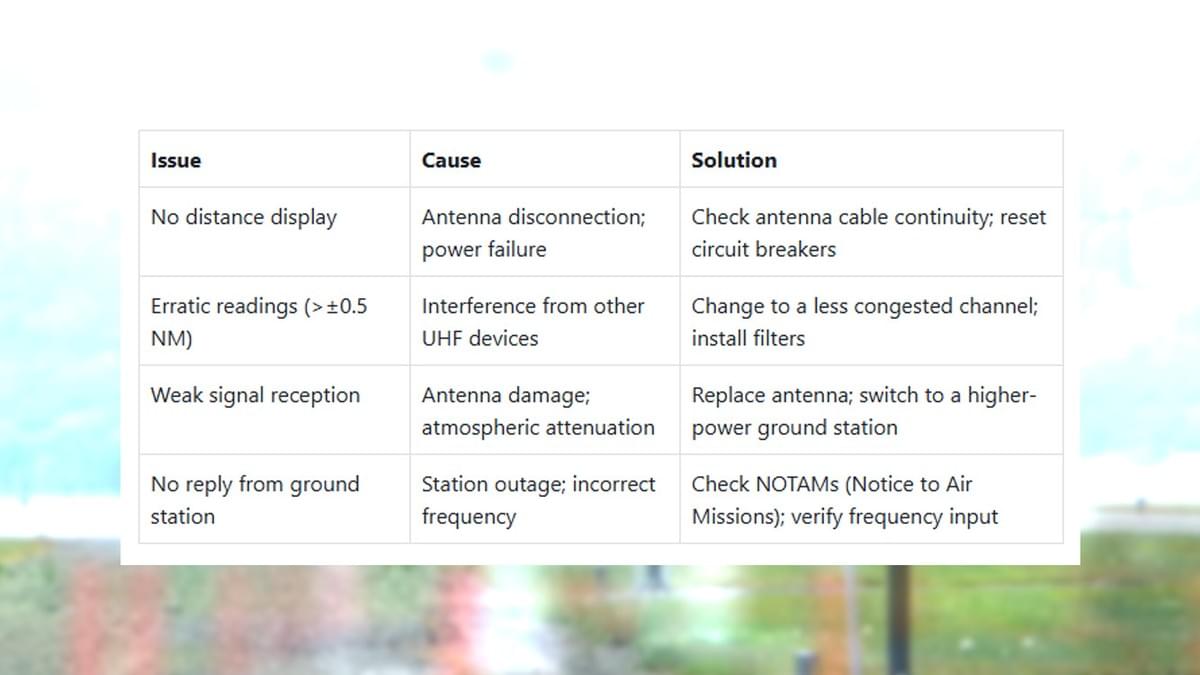Aviation DME (Distance Measuring Equipment) is the cornerstone of reliable airborne navigation, providing pilots with real-time distance data between their aircraft and ground-based stations. In every sector of aviation—from commercial airliners to military jets and private planes—aviation DME remains indispensable, complementing GPS and ensuring safety when satellite signals falter. This guide unpacks everything about aviation DME: its history, how it works, types, applications, maintenance, and why it’s critical for modern flight operations. Whether you’re an aviation professional upgrading systems or a operator seeking reliable navigation tools, understanding aviation DME is key to optimizing flight efficiency and safety.
What Is Aviation DME?
Aviation DME is a radio navigation technology that calculates the slant range (straight-line distance) between an aircraft and a ground-based DME transponder. Operating in the UHF band (962–1213 MHz), aviation DME uses pulsed radio signals to measure the time delay between transmission from the aircraft and reception of the ground station’s reply. This time data is converted into distance, displayed in nautical miles (NM) in the cockpit—critical for navigation, approach, and traffic separation.
Unlike GPS, which relies on satellite signals, aviation DME is ground-based, making it resistant to atmospheric interference and signal jamming. This resilience explains why aviation DME is mandated by aviation authorities worldwide as a backup for GNSS (Global Navigation Satellite Systems). Even as technology advances, aviation DME remains a non-negotiable component of IFR (Instrument Flight Rules) operations, ensuring pilots have actionable distance data in all conditions.
How Aviation DME Works: Core Mechanics
Aviation DME operates on a simple yet precise principle: time-of-flight measurement. Here’s a step-by-step breakdown of its operation:
- Signal Transmission: The airborne aviation DME unit sends a pair of UHF pulses (interrogation signal) toward a ground-based DME transponder. These pulses are encoded to avoid interference from other aviation DME systems.
- Ground Station Response: Upon receiving the interrogation, the ground DME station processes the signal and transmits a paired reply pulse after a fixed delay (typically 50 microseconds). This delay is standardized to prevent overlap with the original signal.
- Time Calculation: The airborne unit measures the total time elapsed between sending the interrogation and receiving the reply. Since radio waves travel at the speed of light (186,282 miles per second), the distance is calculated using the formula:Distance (NM) = (Time Delay × 186,282) / 2 / 6076.12
- Display & Integration: The calculated distance is displayed on the cockpit’s navigation instrument (e.g., multi-function display or DME indicator). Aviation DME data often integrates with other systems like VOR (VHF Omnidirectional Range) to provide “VOR/DME” fixes—combining bearing (from VOR) and distance (from DME) for precise positioning.
This process repeats continuously (up to 150 times per second), ensuring pilots receive real-time updates. Even in dense airspace, aviation DME distinguishes between signals using unique pulse coding, preventing cross-interference.

Key Components of Aviation DME Systems
Aviation DME systems consist of two primary components: airborne equipment and ground infrastructure. Both are engineered for durability and precision, meeting strict aviation standards (e.g., RTCA DO-160, EUROCAE ED-106).
Airborne Aviation DME Equipment
- Transceiver: Generates interrogation pulses and receives reply signals from ground stations. Modern transceivers are compact, weighing under 5 kg, and operate on 115V AC or 28V DC power—compatible with most aircraft electrical systems.
- Control Panel: Allows pilots to select ground DME stations (via frequency input) and adjust display settings (e.g., distance units, hold mode).
- Indicator/Display: Shows real-time distance to the selected DME station, often with additional data like groundspeed (derived from distance changes over time) and time-to-station (TTS).
- Antenna: Mounted on the aircraft’s belly or tail, the antenna is optimized for UHF frequencies, ensuring strong signal transmission and reception even at high altitudes.
Ground-Based Aviation DME Stations
- Transponder: Receives interrogation pulses, processes them, and transmits reply signals. Ground transponders can handle up to 100 interrogations per second, supporting multiple aircraft simultaneously.
- Antenna Array: Typically a collinear array (vertical for omnidirectional coverage) mounted on a tower or building, ensuring line-of-sight communication with aircraft up to 199 NM away (for high-power stations).
- Control & Monitoring System: Remotely manages the transponder, logs performance data, and alerts technicians to faults (e.g., signal degradation, power issues). Many modern stations integrate with ATC (Air Traffic Control) networks for centralized oversight.
Types of Aviation DME
Aviation DME systems are categorized based on performance, application, and signal modulation. Understanding these types helps operators choose the right solution for their needs.
1. Conventional DME (DME/N)
Conventional DME, or DME/N (Normal), is the most common type, used in 80% of global aviation DME deployments. It provides distance accuracy within ±0.25 NM or 3% of the measured range (whichever is larger)—sufficient for en-route navigation and non-precision approaches.
- Key Features:
- Operates on 252 channels (962–1213 MHz).
- Compatible with VOR, NDB (Non-Directional Beacon), and ILS (Instrument Landing System) for combined navigation fixes.
- Supports up to 100 aircraft per station, making it ideal for busy airspace.
- Use Cases: En-route navigation, holding patterns, and initial approach segments (e.g., VOR/DME approaches).
2. Precision DME (DME/P)
Precision DME (DME/P) is designed for high-accuracy operations, including precision approaches and low-visibility landings. It reduces error to ±0.1 NM or 1% of range, meeting ICAO (International Civil Aviation Organization) Category I precision standards.
- Key Features:
- Uses advanced signal processing to filter noise and interference.
- Modulates pulses with pseudo-random codes for enhanced reliability.
- Integrates with GPS and WAAS (Wide Area Augmentation System) for hybrid navigation.
- Use Cases: Precision approach procedures (e.g., RNAV/DME), airport surface navigation, and military low-level flight.
3. DME/J (Japan-Specific)
DME/J is a variant developed for Japan’s dense airspace, operating on unique channels to avoid interference with local radio services. It’s compatible with international aviation DME standards but includes region-specific frequency planning.
- Key Features:
- 50 additional channels (1171–1213 MHz) exclusive to Japan.
- Enhanced co-channel interference rejection.
- Use Cases: Domestic flights in Japan, particularly around Tokyo and Osaka.
Aviation DME vs. Other Navigation Systems
While GPS and GNSS dominate modern aviation, aviation DME offers unique advantages that make it irreplaceable. Here’s how it compares:

Aviation DME’s role as a backup is critical: in 2023, 12% of IFR flights experienced temporary GPS outages, relying on aviation DME to maintain safe navigation.
Applications of Aviation DME in Flight Operations
Aviation DME is integral to every phase of flight, from takeoff to landing. Its versatility makes it a staple in both routine and high-stakes scenarios.
1. En-Route Navigation
Over oceans, deserts, or remote regions where GPS gaps occur, aviation DME ensures pilots stay on course. By pairing with VOR stations, it creates “waypoints” (e.g., “VOR/DME 15 NM at 300°”), allowing precise tracking along airways. For example:
- A transatlantic flight uses aviation DME from Icelandic ground stations to confirm position every 50 NM, ensuring compliance with oceanic separation standards (minimum 50 NM lateral/vertical distance between aircraft).
- Military aircraft use aviation DME in hostile environments where GPS jamming is likely, maintaining mission integrity.
2. Approach & Landing
Aviation DME is critical for approach procedures, providing distance-to-threshold data that complements ILS or RNAV (Area Navigation) systems. In non-precision approaches (e.g., VOR/DME-A), it defines key checkpoints:
- Final Approach Fix (FAF): Typically 5–10 NM from the runway, marked by a specific aviation DME reading (e.g., “7.5 NM from DME station X”).
- Decision Height (DH): Pilots use aviation DME to confirm they’re at the correct distance when reaching DH (e.g., “3 NM from runway, 200 ft altitude”).
At busy airports like London Heathrow, aviation DME synchronizes with ILS to manage high landing rates (up to 45 flights/hour), ensuring each aircraft maintains proper spacing.
3. Holding Patterns
When air traffic congestion delays landing, aviation DME defines holding pattern boundaries. Pilots use distance from a DME station to stay within designated airspace:
- A typical holding pattern is a racetrack shape, with “inbound” and “outbound” legs measured via aviation DME (e.g., “outbound to 10 NM, inbound to 5 NM from station Y”).
- Controllers adjust holding patterns using aviation DME data to reduce delays, ensuring aircraft queue efficiently.
4. Low-Visibility Operations
In fog, rain, or snow, aviation DME becomes a lifeline. Unlike visual references, its signals penetrate weather, providing consistent distance data:
- At Frankfurt Airport, aviation DME/P enables Category IIIa approaches (visibility as low as 700 ft), allowing flights to land safely when GPS signals are degraded by fog.
- Helicopters using aviation DME navigate to offshore oil rigs in North Sea storms, relying on distance data to avoid collisions with platforms.

Aviation DME Standards & Regulations
Aviation DME must adhere to strict global standards to ensure interoperability and safety. Key regulatory bodies and specifications include:
- ICAO Annex 10: Mandates aviation DME performance criteria (e.g., accuracy, signal strength, interference rejection) for international flights.
- FAA (Federal Aviation Administration): Certifies aviation DME systems via TSO (Technical Standard Order) C62—requiring compliance with environmental testing (vibration, temperature, humidity).
- EASA (European Union Aviation Safety Agency): Issues ETSO (European TSO) 1121, aligning with ICAO standards for EU-registered aircraft.
- RTCA DO-229: Defines minimum operational performance standards (MOPS) for airborne aviation DME equipment, including receiver sensitivity and pulse coding.
Compliance with these standards is non-negotiable: uncertified aviation DME systems risk fines, grounded flights, or accidents.
Maintenance & Calibration of Aviation DME
To ensure reliability, aviation DME systems require regular maintenance. Neglect leads to signal errors, downtime, or safety risks—costing operators \(10,000–\)50,000 per hour of grounded flights.
Airborne Equipment Maintenance
- Daily Checks: Pilots verify aviation DME display accuracy against known waypoints (e.g., “At 10 NM from station Z, confirm display reads 10.0 ±0.2 NM”).
- Monthly Inspections: Technicians test transceiver output power (minimum 20 watts) and antenna connectivity, cleaning connectors to prevent signal loss.
- Annual Calibration: Certified labs align the airborne unit with a reference signal generator, ensuring distance calculations meet ±0.1 NM tolerance.
Ground Station Maintenance
- Weekly Diagnostics: Remote monitoring systems check transponder health (e.g., reply efficiency >95%, power supply stability).
- Quarterly Site Inspections: Technicians inspect antennas for corrosion, vegetation overgrowth, or physical damage (e.g., from storms).
- Biennial Calibration: Using calibrated test equipment, engineers verify the ground station’s delay timing (50 microseconds ±0.1 µs) and signal strength (minimum 50 watts ERP).
Troubleshooting Common Aviation DME Issues
Even well-maintained systems face occasional problems. Here’s how to diagnose and resolve frequent aviation DME issues:

Prompt troubleshooting minimizes disruption: airlines with dedicated aviation DME support teams reduce downtime by 40% compared to reactive maintenance.
Future of Aviation DME: Trends & Innovations
Aviation DME is evolving to meet next-gen aviation needs, with these key trends:
1. DME/N+ Upgrade
DME/N+ enhances conventional aviation DME with digital signal processing, reducing interference and extending range to 250 NM. Trials in Australia show 30% fewer signal dropouts in remote areas.
2. DME as a GNSS Backup
With growing concerns over GPS jamming, aviation DME is being integrated into “resilient navigation” networks. The FAA’s NextGen program plans to triple DME station density in the U.S. by 2030.
3. AI-Powered Monitoring
Ground stations with AI algorithms predict failures (e.g., declining reply efficiency) 48 hours in advance, reducing unplanned outages by 60%.
4. Miniaturization
New airborne aviation DME units (e.g., Honeywell’s DME-4000) weigh under 3 kg, ideal for drones and light aircraft without sacrificing performance.
Choosing the Right Aviation DME System
Selecting aviation DME requires balancing performance, compliance, and cost. Key factors to consider:
- Accuracy Needs: For precision approaches, choose DME/P (±0.1 NM); for en-route, DME/N suffices.
- Aircraft Type: Light planes may use compact transceivers (e.g., Garmin GDL 69); airliners need high-power units (e.g., Collins Aerospace DME-900).
- Regional Compliance: Operators in Japan must use DME/J; global fleets need multi-standard systems.
- Integration: Ensure compatibility with existing avionics (e.g., FMS, MFD) via ARINC 429 or CAN bus protocols.
Trusted manufacturers like Honeywell, Collins Aerospace, and Thales offer certified aviation DME systems with 5–10 year warranties—critical for long-term reliability.
Why Aviation DME Remains Indispensable
In an era of GPS and autonomous flight, aviation DME’s role is more vital than ever. Its ground-based design ensures resilience against cyber threats and natural disasters, while its integration with legacy systems (VOR, ILS) preserves infrastructure investments. For operators, aviation DME isn’t just a navigation tool—it’s a safety net, a regulatory requirement, and a cornerstone of efficient flight operations.
Ready to upgrade your aviation DME system? Contact our experts for a tailored solution—backed by 20+ years of aviation navigation experience. Ensure your fleet stays compliant, safe, and connected with industry-leading aviation DME technology.

